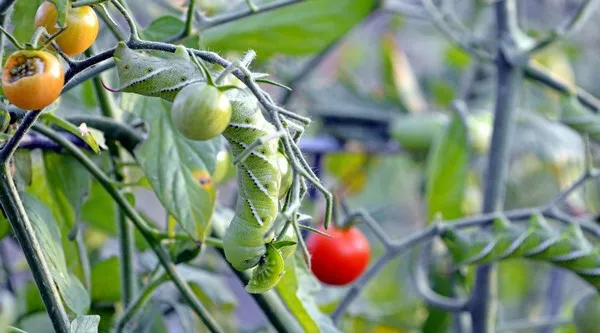Tomatoes, beloved by gardeners for their versatility and flavor, are a staple in many home gardens. Whether you’re a seasoned gardener or just starting out, encountering tomato plants flowering but failing to yield fruit can be a perplexing issue. Understanding the reasons behind this phenomenon is crucial for ensuring a bountiful harvest. In this comprehensive guide, we delve into the factors that contribute to tomato plants flowering without fruit and offer solutions to help you address this common challenge.
Understanding the Tomato Plant Lifecycle
Before diving into the reasons why your tomato plants might not be producing fruit despite flowering, it’s essential to understand the lifecycle of a tomato plant. Like many fruit-bearing plants, tomatoes undergo a series of stages from seed to harvest.
1. Germination: The first stage of a tomato plant’s life begins with germination, where the seed sprouts and develops into a seedling.
2. Vegetative Growth: During this stage, the tomato plant focuses on establishing a strong root system and developing lush foliage. Adequate sunlight, water, and nutrients are crucial for healthy vegetative growth.
3. Flowering: As the plant matures, it enters the flowering stage, marked by the emergence of yellow blossoms. These flowers contain both male and female reproductive organs and require pollination to set fruit.
4. Fruit Development: Following successful pollination, the flowers develop into green fruits, which gradually ripen into the familiar red, yellow, or orange tomatoes.
Common Causes of Flowering Without Fruit
While tomato plants typically transition seamlessly through each stage of their lifecycle, several factors can disrupt the fruiting process, resulting in flowers without subsequent fruit formation. Here are some common culprits to consider:
1. Poor Pollination: Insufficient pollination is a leading cause of flowering without fruit in tomato plants. Tomatoes are primarily self-pollinating, but they can benefit from the assistance of pollinators such as bees and other insects. Factors such as cold or rainy weather can hinder pollinator activity, leading to incomplete pollination and reduced fruit set.
2. Environmental Stress: Environmental stressors, such as extreme temperatures, fluctuations in moisture levels, and inadequate sunlight, can negatively impact fruit development. High temperatures above 90°F (32°C) can cause blossom drop, where flowers abort before setting fruit. Additionally, prolonged periods of drought or waterlogged soil can stress the plants, affecting their ability to produce fruit.
3. Nutrient Imbalance: Imbalances in essential nutrients, particularly nitrogen, phosphorus, and potassium, can disrupt fruit formation in tomato plants. Excessive nitrogen encourages lush vegetative growth at the expense of fruit development, while deficiencies in phosphorus and potassium can impair flowering and fruit set. Conducting a soil test can help identify nutrient deficiencies and guide appropriate fertilization practices.
4. Varietal Characteristics: Some tomato varieties exhibit inherent traits that predispose them to flowering without fruit under certain conditions. Factors such as genetics, growth habit, and fruiting behavior can influence a plant’s ability to set fruit. When selecting tomato varieties for your garden, consider factors such as climate suitability, disease resistance, and fruiting capacity to maximize your chances of a successful harvest.
5. Pest and Disease Pressure: Pests such as aphids, thrips, and whiteflies can damage tomato flowers and inhibit fruit development. Likewise, diseases such as bacterial canker, fusarium wilt, and powdery mildew can compromise plant health and reduce fruit yield. Implementing integrated pest management strategies and practicing good garden hygiene can help mitigate pest and disease pressure.
Strategies for Addressing Flowering Without Fruit
Now that we’ve explored the potential causes of flowering without fruit in tomato plants, let’s discuss strategies for remedying this issue and promoting optimal fruit set:
1. Encourage Pollinator Activity: Enhance pollination by attracting beneficial insects to your garden with flowering plants, providing nesting sites, and avoiding the use of pesticides that harm pollinators.
2. Optimize Growing Conditions: Ensure your tomato plants receive adequate sunlight, consistent moisture, and well-draining soil to minimize environmental stress and promote healthy fruit development.
3. Maintain Nutrient Balance: Amend soil with organic matter and balanced fertilizers to provide essential nutrients in the appropriate proportions for optimal plant growth and fruit production.
4. Choose Suitable Varieties: Select tomato varieties that are well-suited to your climate and growing conditions, paying attention to their fruiting habits and disease resistance traits.
5. Monitor for Pests and Diseases: Regularly inspect your tomato plants for signs of pest infestation or disease symptoms and take prompt action to mitigate these threats through cultural, biological, or chemical control methods.
By implementing these strategies and addressing potential issues proactively, you can increase the likelihood of your tomato plants producing abundant fruit and enjoy a rewarding harvest.
Conclusion
Tomatoes are a favorite among home gardeners for their delicious flavor and culinary versatility. However, encountering tomato plants flowering without fruit can be frustrating. By understanding the factors that contribute to this phenomenon and implementing appropriate strategies, you can overcome this challenge and ensure a successful tomato harvest. Whether you’re a novice gardener or seasoned enthusiast, cultivating thriving tomato plants is within reach with the right knowledge and care.


